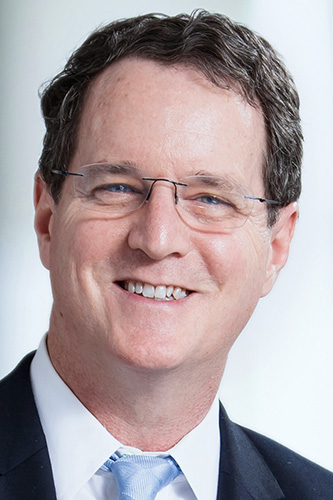

 The first things that usually come to mind when talking about software development risks are bugs and security issues that have not been detected or those that have been discovered but left unaddressed. Some may also point out poor code quality reviews and the use of third-party components and dependencies laced with malicious code. more
The first things that usually come to mind when talking about software development risks are bugs and security issues that have not been detected or those that have been discovered but left unaddressed. Some may also point out poor code quality reviews and the use of third-party components and dependencies laced with malicious code. more
 Phishing attacks have been rising over the past couple of years. Reports show that there was a 345 percent increase in phishing attacks between 2020 and 2021. In 2022, the number of advanced phishing attacks rose by 356 percent. Behind these alarming numbers, however, is an even uglier picture of digital fraud: a difficult-to-quantify prevalence of fake or spoof websites. more
Phishing attacks have been rising over the past couple of years. Reports show that there was a 345 percent increase in phishing attacks between 2020 and 2021. In 2022, the number of advanced phishing attacks rose by 356 percent. Behind these alarming numbers, however, is an even uglier picture of digital fraud: a difficult-to-quantify prevalence of fake or spoof websites. more
 In 2017, Telesat, an established Canadian geostationary satellite operator, announced a planned low-Earth orbit Internet service constellation. The plan called for 117 satellites with inter-satellite laser links in a mix of inclined and polar orbits, enabling global coverage. more
In 2017, Telesat, an established Canadian geostationary satellite operator, announced a planned low-Earth orbit Internet service constellation. The plan called for 117 satellites with inter-satellite laser links in a mix of inclined and polar orbits, enabling global coverage. more
 In a rapidly evolving digital landscape, the value of IP addresses has surged to the forefront of discussions. Over a month ago, Amazon Web Services (AWS) made a pivotal announcement, reshaping the IP address pricing landscape. Citing the escalating costs of acquiring IP addresses on secondary markets, AWS declared a fundamental shift in its pricing strategy, set to take effect on February 1, 2024. more
In a rapidly evolving digital landscape, the value of IP addresses has surged to the forefront of discussions. Over a month ago, Amazon Web Services (AWS) made a pivotal announcement, reshaping the IP address pricing landscape. Citing the escalating costs of acquiring IP addresses on secondary markets, AWS declared a fundamental shift in its pricing strategy, set to take effect on February 1, 2024. more
 Yesterday -- in a unanimous decision of the US Federal Court of Appeals for the DC Circuit (CADC) in ASTM v. Public.Resource.Org --- some of the worst standards paywalls came tumbling down. The court definitively determined that where governmental authorities incorporate private organisation technical standards into law by reference, non-commercial dissemination of those standards "constitutes fair use and cannot support liability for copyright infringement." more
Yesterday -- in a unanimous decision of the US Federal Court of Appeals for the DC Circuit (CADC) in ASTM v. Public.Resource.Org --- some of the worst standards paywalls came tumbling down. The court definitively determined that where governmental authorities incorporate private organisation technical standards into law by reference, non-commercial dissemination of those standards "constitutes fair use and cannot support liability for copyright infringement." more
 A few years ago, there were a lot of predictions that we'd see broadband networks converting to quantum technology because of the enhanced security. As happens with many new technologies, quantum computing is advancing at a slower pace than the wild predictions that accompanied the launch of the new technology. more
A few years ago, there were a lot of predictions that we'd see broadband networks converting to quantum technology because of the enhanced security. As happens with many new technologies, quantum computing is advancing at a slower pace than the wild predictions that accompanied the launch of the new technology. more
 The canonical specification of the DNS that is normally cited are the pair of quite venerable RFCs, RFC 1034, "Domain names - concepts and facilities", and RFC 1035, "Domain names - implementation and specification", both published in November 1987. However, these two specification documents are just the tip of a rather large iceberg. One compendium of all the RFCs that touch upon the DNS lists some 292 RFCs. more
The canonical specification of the DNS that is normally cited are the pair of quite venerable RFCs, RFC 1034, "Domain names - concepts and facilities", and RFC 1035, "Domain names - implementation and specification", both published in November 1987. However, these two specification documents are just the tip of a rather large iceberg. One compendium of all the RFCs that touch upon the DNS lists some 292 RFCs. more
 The Uptime Institute (UI) is an IT industry research firm best known for certifying that data centers meet industry standards. UI issues an annual report that analyzes the cause of data center outages. The causes for data center outages are relevant to the broadband industry because the same kinds of issues shut down switching hubs and Network Operations Centers. more
The Uptime Institute (UI) is an IT industry research firm best known for certifying that data centers meet industry standards. UI issues an annual report that analyzes the cause of data center outages. The causes for data center outages are relevant to the broadband industry because the same kinds of issues shut down switching hubs and Network Operations Centers. more
 Project Liberty's Institute sat down with Wendy Seltzer, an advisor to the Decentralized Social Networking Protocol (DSNP). Wendy was counsel to the World Wide Web Consortium (W3C), and has served on the boards of The Tor Project, Open Source Hardware Association and ICANN. more
Project Liberty's Institute sat down with Wendy Seltzer, an advisor to the Decentralized Social Networking Protocol (DSNP). Wendy was counsel to the World Wide Web Consortium (W3C), and has served on the boards of The Tor Project, Open Source Hardware Association and ICANN. more
 European Union (EU) legislators, like most of the world, are troubled about the increasing number and severity of cybersecurity incidents. However, unlike most of the world, which is taking a flexible, adaptive Zero Trust Model approach of continuous controls for cyberdefense, the EU government is pursuing a vastly expanded version of the failed Common Criteria certification model coupled with regulatory extremism and exceptionalism strategies. more
European Union (EU) legislators, like most of the world, are troubled about the increasing number and severity of cybersecurity incidents. However, unlike most of the world, which is taking a flexible, adaptive Zero Trust Model approach of continuous controls for cyberdefense, the EU government is pursuing a vastly expanded version of the failed Common Criteria certification model coupled with regulatory extremism and exceptionalism strategies. more
 On 21 August 2023, ICANN org. made its position in relation to the current state of the UN's Global Digital Compact (GDC) clear in a blog post by Sally Costerton (ICANN CEO), John Curran (ARIN), and Paul Wilson (APNIC), entitled "The Global Digital Compact: A Top-down Attempt to Minimize the Role of The Technical Community." The publication strongly criticizes the GDC's attempt at folding the technical community into the civil society umbrella under a "tripartite" approach also involving the private sector and governments, as proposed by the Secretary-General's Envoy on Technology, Amandeep Gill. more
On 21 August 2023, ICANN org. made its position in relation to the current state of the UN's Global Digital Compact (GDC) clear in a blog post by Sally Costerton (ICANN CEO), John Curran (ARIN), and Paul Wilson (APNIC), entitled "The Global Digital Compact: A Top-down Attempt to Minimize the Role of The Technical Community." The publication strongly criticizes the GDC's attempt at folding the technical community into the civil society umbrella under a "tripartite" approach also involving the private sector and governments, as proposed by the Secretary-General's Envoy on Technology, Amandeep Gill. more
 The latest iteration of the most expansive, omnipotential cybersecurity legal regime ever drafted appeared a few days ago. The European Union (EU) Cyber Resilience Act (CRA) is attempting to assert jurisdiction and control over all "products with digital elements" defined as "any software or hardware product and its remote data processing solutions, including software or hardware components to be placed on the market." more
The latest iteration of the most expansive, omnipotential cybersecurity legal regime ever drafted appeared a few days ago. The European Union (EU) Cyber Resilience Act (CRA) is attempting to assert jurisdiction and control over all "products with digital elements" defined as "any software or hardware product and its remote data processing solutions, including software or hardware components to be placed on the market." more
 In early 2022 the discount that had been available for large blocks of IPv4 addresses disappeared. For the first time in years, /16 blocks and larger began to sell at an increasing premium. By Q2-2023, small and medium-sized blocks sold for a 30-35% discount to larger ones. At the same time, the tighter range of prices that had persisted for nearly a decade fractured and blocks traded in wide ranges throughout 2022 and the first half of 2023. more
In early 2022 the discount that had been available for large blocks of IPv4 addresses disappeared. For the first time in years, /16 blocks and larger began to sell at an increasing premium. By Q2-2023, small and medium-sized blocks sold for a 30-35% discount to larger ones. At the same time, the tighter range of prices that had persisted for nearly a decade fractured and blocks traded in wide ranges throughout 2022 and the first half of 2023. more
 On 24-28 July, states convened in New York for the fifth session of the UN First Committee's Open ended Working Group on ICTs (OEWG), which aims to establish a common understanding of - and further develop the framework for - responsible state behaviour in cyberspace. This session marked a critical juncture in the process, with states negotiating the OEWG's annual progress report... more
On 24-28 July, states convened in New York for the fifth session of the UN First Committee's Open ended Working Group on ICTs (OEWG), which aims to establish a common understanding of - and further develop the framework for - responsible state behaviour in cyberspace. This session marked a critical juncture in the process, with states negotiating the OEWG's annual progress report... more
 In 2020 a group of book publishers sued the Internet Archive over their Controlled Digital Lending program, which made PDF scans of books and lent them out from the Archive's website. For books still in copyright, the Archive usually limited the number of copies of a book lent to the number of physical copies of the book they had in storage. Several publishers sued with an argument that can be summarized as "that's not how it works." more
In 2020 a group of book publishers sued the Internet Archive over their Controlled Digital Lending program, which made PDF scans of books and lent them out from the Archive's website. For books still in copyright, the Archive usually limited the number of copies of a book lent to the number of physical copies of the book they had in storage. Several publishers sued with an argument that can be summarized as "that's not how it works." more
Sponsored byVerisign

Sponsored byDNIB.com

Sponsored byCSC

Sponsored byVerisign

Sponsored byWhoisXML API

Sponsored byRadix

Sponsored byIPv4.Global
